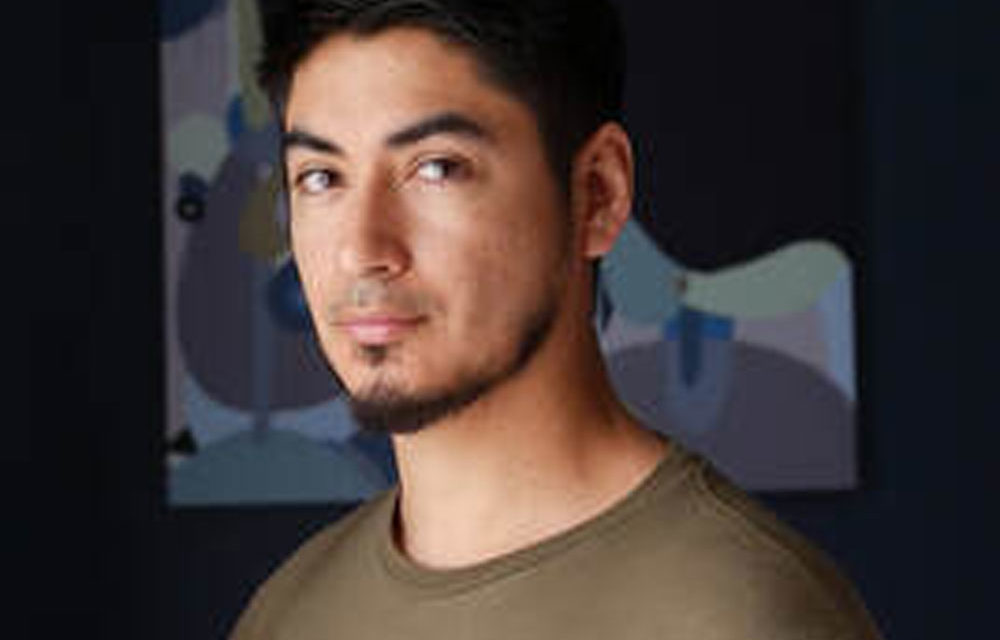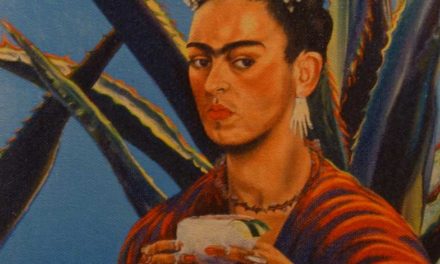Courtesy of Rigoberto Luna.
Born in 1987 in the border town of Acuña, Mexico, Fernando Andrade has lived in San Antonio, Texas, since he was seven years old. During Andrade’s early childhood years, it was considered safe for children to play outside and he remembers playing outdoor games with his family during those years. Today, however, the neighborhood where Andrade was raised is troubled with ongoing violence brought on by the leaders of drug cartels. Informed of the dire situation through stories told by friends and relatives, as well as by news reports, books, and online media, Andrade is disheartened that his hometown and other areas south of the U.S./Mexico border have become places of violence where people are disappearing or dying on a daily basis. Drug leaders intimidate and murder innocent victims, often disposing of bodies in barrels of acid or by filling garbage bags with body parts. For Andrade, the situation became personal in 2012, when a friend of his went missing, never to be seen again.
As an artist, Andrade copes with the turmoil in his native homeland with two distinct bodies of work: figurative drawings and abstract paintings. While the drawings are narrative explorations of the events taking place, the paintings are vehicles for nurturing feelings of hopeful joy and optimism.
In his figurative drawings, Andrade creates simple narratives based on stories he has heard about border violence. Believing that everyone has their own childhood memories and can identify with the innocence of youth, Andrade stages his scenarios using children in place of adults, a strategy for enticing viewers to engage in his conversation. He omits background details allowing viewers to project their own visualizations into each scene, and depicts wooden sticks, which he remembers playing with as a child, as metaphors for guns. In his series A Jugar la Guerrita (To Play a Little War), a young boy appears with a stick that is spewing off-color phrases in Spanish, in reference to the corruption that now pervades the region. In the series Tierra y Libertad (Land and Liberty), groups of children appear to be playing childhood games but, upon closer inspection, are surrogates for the perpetrators and their victims. In his God Bless America series, Andrade calls attention to the dangers of guns by superimposing intricately detailed images of branches over barely visible phrases relating to the American gun culture.
In his abstract paintings, Andrade expresses a freedom from the anguish that underlies his figurative works. Working improvisationally, the artist creates organic compositions that are colorful and animated. Viewing his process as a kind of spiritual meditation, Andrade becomes free to imagine cosmic visions that have rhythmic affinities with music or dance, and which celebrate the splendor and preciousness of life itself. (Photo Courtesy fernandoandradeart.com )
The cover art featured this week is part of a special ongoing outdoor exhibit featuring the works of 11 San Antonio artists and curated by Rigoberto Luna. “Alive in Memory & Spirit” is a visual interpretation of some of the critical contributors to San Antonio, the Missions and the surrounding area. Each of the large-scale reproductions of original artworks commissioned by the World Heritage Office is a traditional or non-traditional portrait of these departed individuals whose memories are celebrated and honored.The painting on the cover by Fernando Andrade explores the life of Don Pedro Huizar (Panel 5B at the exhibit).
Don Pedro Huizar was a Spanish architect, surveyor, craftsman, and sculptor. He is often credited with creating the iconic Rose Window, located on the church sacristy at Mission San José. Folklore suggests he carved the window as a monument to his enduring love for his sweetheart, Rosa, who was tragically lost at sea on her way to join him.
The indigenous peoples of Mexico did not grieve the dead. They celebrated their spirit and honored their memory. The outdoor exhibit celebrates the significant impact on our shared history of these individuals and their families. At the core of the exhibition are 11 large scale reproductions of original artworks commissioned by the City of San Antonio’s World Heritage Office. Each artist focuses on traditional and non-traditional portraits, revealing the qualities that made them an essential part of the UNESCO World Heritage Sites. Artists for this exhibit include: Fernando Andrade, Richard Arredondo, David Blancas, Adriana M. Garcia, Cassie Gnehm, Omar Gonzalez, Raul Rene Gonzalez, Christopher Montoya, Elizabeth Rodriguez, Eva Marengo Sanchez, and Jesus Treviño.
The outdoor exhibit will remain on display at Mission Marquee Plaza, 3100 Roosevelt Ave., beginning November 1 through the end of December. Guests can view the exhibit from 9 a.m.-5 p.m. daily, and are encouraged to practice social distancing and wear face coverings when visiting. More information on the exhibit is available at www.missionmarquee.com.
Fernando Andrade








